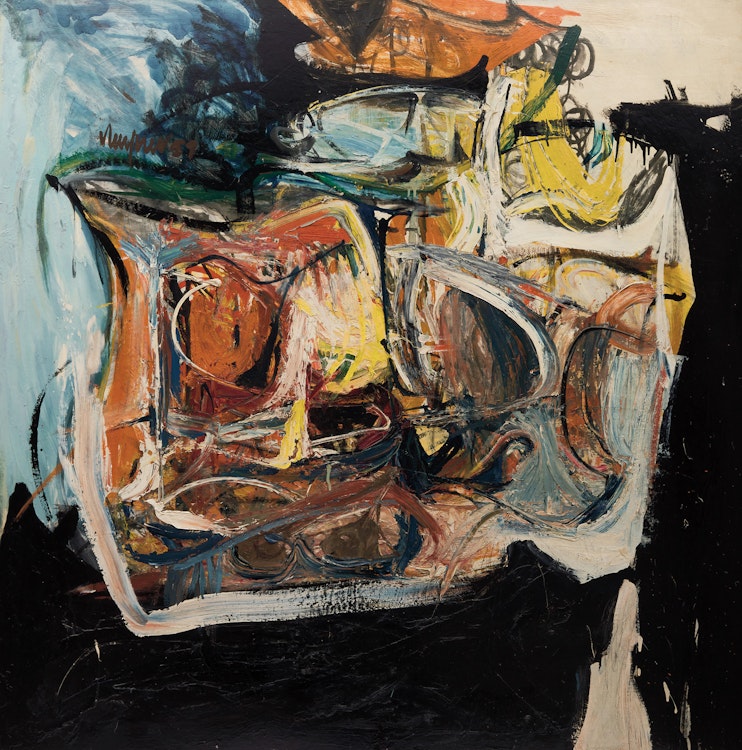The Knave, 1957 by Gordon Rayner

Gordon Rayner
The Knave, 1957
oil on board
signed and dated 1957 upper left; signed, titled and dated "Oct. '57" on the reverse; titled to an exhibition label on the reverse
47.25 x 47 in ( 120 x 119.4 cm )
Auction Estimate: $6,000.00 - $8,000.00
Price Realized $21,600.00
Sale date: November 27th 2024
Estate of Robert Noakes
86th "Annual Exhibition", Ontario Society of Artists, Art Gallery of Ontario, Toronto, 1958
Roald Nasgaard, "Abstract Painting in Canada," Toronto/Vancouver, 2007, page 109
"The Knave" is comprised of exuberant, painterly gestures which swirl and swoop across the surface. There are rich contrasts in the paint surface, from the glossy black of the background, thick impasto at the centre and delicate washes of blue at the top left. The influence of Ronald is clear in the way the gestural brushwork coalesces into a central image. The anthropomorphic title imbues the abstract image with presence and personality. A highly accomplished work for a young painter, "The Knave" would be exhibited at the annual exhibition of the Ontario Society of Artists in March 1958.
Share this item with your friends
Gordon Rayner
(1935 - 2010)
Rayner grew up surrounded by art, as his father, grandfather and great-grandfather had all been artists. He learned a sense of discipline through constant painting and learning to master technical painting skills, before he began an experimental painting career. His artwork draws from both figurative and abstract sources of inspiration.

